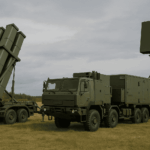More than 3,200 machinists at Boeing’s defense plants in the St. Louis area went on strike just after midnight, early Monday, August 4. The union-IAM District 837-had voted down a new four-year contract the day before.
The strike hits three locations: St. Louis, St. Charles, and Mascoutah, Illinois. It’s the first walkout at these sites in decades.
Union reps say the workers want a deal that matches the level of work they put in and the importance of the programs they help build. Boeing called the vote disappointing and said it has activated contingency measures to keep operations running during the strike.
Boeing Revised Contract Offer and Union Vote
Late last week, Boeing gave the union a revised proposal after workers turned down the initial offer on July 27.
The company said the new deal would mean an average wage increase of 40% over the life of the contract. It included a general raise, a ratification bonus, and changes to vacation and scheduling rules-issues that had caused frustration recently. The union’s bargaining team brought it to a vote, but members rejected it. After a seven-day cooling-off period, the deadline passed and the strike began.
Dan Gillian, Boeing’s top executive in St. Louis, said Sunday night that the company had planned for this possibility.
“We’re disappointed our employees turned down an offer that included 40% average wage growth and addressed their main concern around alternative work schedules,” he said. Gillian added that Boeing has “fully rolled out our contingency plan” to continue meeting customer needs.
Union officials, however, had a very different take.
IAM Midwest Territory General Vice President Sam Cicinelli said the workers “build the aircraft and defense systems that keep our country safe” and “deserve a contract that protects their families and acknowledges their unmatched skills.
Resident General Vice President Jody Bennett called the vote a strong signal and promised full backing for the strike. IAM International President Brian Bryant also voiced public support for the walkout.
Programs Affected at Boeing St. Louis Defense Sites
The sites involved in the strike are central to Boeing’s combat aircraft and precision weapons operations.
- The main facility near Lambert Field produces the F-15 and is home to the final assembly line for the T-7A Red Hawk trainer.
- In St. Charles, workers build guidance kits and cruise missiles that supply both U.S. and allied forces.
- Mascoutah, located at MidAmerica St. Louis Airport, handles development and integration work for the Navy’s MQ-25 carrier-based tanker.
A work stoppage across those shops interrupts a cadence that relies on steady handoffs and deeply practiced routines.
Strike Impact and Near Term Risks at Boeing St. Louis
Boeing is reassuring customers that work will continue, with managers saying salaried staff and non-striking workers will keep things running. While that can help maintain some engineering and testing efforts, it’s not a full replacement for the skilled hands on the line.
Production tends to slow if earlier stations aren’t feeding parts through, and errors usually increase when teams are shuffled. That can also trigger parts shortages that spread through the system.
The company dealt with a similar challenge last fall during a long strike in its commercial division in Washington State. That dispute involved a larger bargaining unit and a different power dynamic, but it served as a reminder – even after assembly lines start back up, getting back to full speed takes time.
Union members said their vote came down to pay, schedules, and retirement. Boeing’s revised offer included a general wage increase spread over four years, plus other pay boosts and a one-time bonus. It also changed or eliminated some of the alternative workweek policies that had sparked backlash in the earlier proposal.
As details made the rounds, workers at the top of the pay scale looked closely at modest raises and attendance-based bonuses. Others zeroed in on pension formulas and whether health benefits would hold up if the strike dragged on. Each side leaned into different parts of the same offer-Boeing pointed to average wage growth across roles, while the union focused on base pay, consistent scheduling, and the long-term strength of retirement benefits.
How long the strike lasts is now the key factor. A short pause can be absorbed – jobs in progress might catch up with overtime or some rescheduling. But if it drags on, bigger problems start to pile up: testing gets delayed, supplier deliveries fall behind, and delivery schedules start slipping.
The F-15EX line, for example, supports both U.S. Air Force and international orders, and relies on a steady flow through stages like wing join, systems install, and paint-none of which can just be stacked up. The T-7A program involves not just aircraft but also simulators, software updates, and flight testing, all tied to the training schedule. Delays in St. Louis push that whole schedule downstream, affecting how instructor and student slots are planned. The MQ-25 is still in early integration and heavily dependent on tests tied to carrier deck operations.
Over in St. Charles, the missile lines fill restock and export orders with strict quality controls. The crews there know how to avoid costly mistakes in handling explosives-knowledge that’s hard to replace quickly. Legally, a strike is what it is. But if it stretches on, the ripple effects will be loud and clear across the programs that depend on these lines.
Boeing’s backup plan focuses on keeping engineering efforts going, safeguarding test assets, and securing key subsystems. Managers can shift salaried techs into some final assembly work, but that only goes so far-output slows. Quality teams can help keep things moving by inspecting inventory and long-lead components. Executives are also working with suppliers to hold shipments steady so materials are ready when production ramps back up. That helps avoid a messy restart. Still, the real fix lies at the bargaining table. If both sides come back and bridge the gaps on wage steps and scheduling, the lines can restart with more cooperation and fewer problems.
The union’s strength comes from a tight job market for certified aircraft workers and the point that Pentagon keeps a close eye on delivery timelines. While defense officials won’t weigh in publicly during an active labor dispute, program teams still track every milestone. Contracting officers can offer some leeway if a strike counts as an excusable delay, but they’re still under pressure to keep fleets on schedule. That creates quiet but steady pressure on both sides to reach a deal. Boeing wants steady production and a cost structure it can factor into future contracts. Workers want base pay that keeps up with inflation and extra pay for unpredictable shifts. A long standoff that pushes deliveries off track helps no one.
Healthcare remains a key concern for many families. Under company policy, if no agreement is reached and the strike continues, employer-paid medical, dental, vision, and related benefits will end after August 31. While union strike pay can help with basic expenses, it falls well short of replacing full wages and coverage.
IAM District 837 Contract Dispute Details
The offer that was voted down included base-pay raises, a one-time $5,000 ratification bonus, and several adders. Public details show a 20% general wage increase over four years. Boeing said the full package would amount to around 40% average wage growth when factoring in shift differentials, step increases, and other adjustments.
The proposal also changed how vacation time is earned and revised the alternative workweek setup that had drawn strong pushback. For members already at the top of the pay scale, the raise felt smaller, and the deal included a proposed 50-cent-per-hour bump tied to attendance.
Others focused more on changes to the pension multiplier and how overtime rules would affect take-home pay when shifts vary.
Public statements and company documents point to a few main features in the proposed deal:
- Compensation: A 20% general wage increase over four years, a $5,000 ratification bonus, and additional pay items that Boeing says bring total average wage growth to 40%.
- Schedules and time off: Changes to the alternative workweek language that had caused pushback, along with improvements to vacation and sick leave. Overtime rules stayed mostly the same in the latest draft.
Health coverage is now a key part of what members are weighing. According to company guidance, if there’s no deal by the end of August, employer-paid medical, dental, vision, prescription, and flexible-spending benefits will stop. That deadline is now just a few weeks out. Union strike pay and local support can help, but they don’t fully make up for the loss-especially for families managing ongoing care or regular prescriptions.
What Will Decide the Outcome
Officially, the Pentagon will stay out of the labor dispute. But behind the scenes, program offices need to know deliveries will stay on track so they can manage fleet planning. Boeing’s defense programs have only recently started showing signs of steady progress after years of delays and rising costs. Program managers aren’t looking to add another complication. A short strike would keep the impact contained. But if it drags on, acceptance milestones shift, testing gets pushed back, and training schedules start to slip.
The 2024 commercial-division strike provides relevant background, though it isn’t a one-to-one comparison. That strike involved about 33,000 workers, shut down major jetliner lines, and ended with a deal that raised wages by 38% over four years. The current St. Louis walkout involves far fewer people, and the economics of defense programs are different from commercial ones with long backlogs. Still, both strikes are happening in the same broader environment-tight labor markets, heightened focus on quality, and customers who can’t afford disruptions. Boeing has been working to reduce losses and stabilize output this year. A long shutdown on the defense side would make that a lot harder.
Our analysis shows the near-term outlook hinges on three practical variables: how quickly talks restart, whether the company sweetens base-pay steps without reshaping the entire package, and how long customers tolerate drift before pressing for a deal that protects their calendars.
REFERENCE SOURCES
- https://abcnews.go.com/Business/3200-boeing-jet-weapons-workers-begin-strike/story?id=124335909
- https://www.reuters.com/business/world-at-work/over-3000-boeing-fighter-jet-workers-go-strike-after-rejecting-contract-offer-2025-08-04/
- https://apnews.com/article/boeing-strike-union-fighter-jets-3cc6357adc8bda4bacb334204d081fd4
- https://www.washingtonpost.com/business/2025/08/04/boeing-defense-union-votes-strike/
- https://www.ksdk.com/article/news/local/business-journal/st-louis-boeing-machinists-reject-offer-strike/63-dcd58f65-b773-49ff-9348-9c1ee04a7e8a
- https://www.flightglobal.com/fixed-wing/strike-looms-at-boeing-fighter-assembly-sites-after-workers-reject-contract-offer/163960.article
- https://breakingdefense.com/2024/04/boeing-to-shutter-super-hornet-line-in-2027-after-final-navy-order-boeing-vp/
- https://www.flightglobal.com/fixed-wing/boeing-extends-super-hornet-production-to-2027-with-final-new-build-order-from-usa/157449.article
- https://www.boeing.com/specialty/iam837
- https://www.goiam.org/news/iam-district-837-members-in-st-louis-reject-latest-boeing-offer-strike-for-fair-contract/



